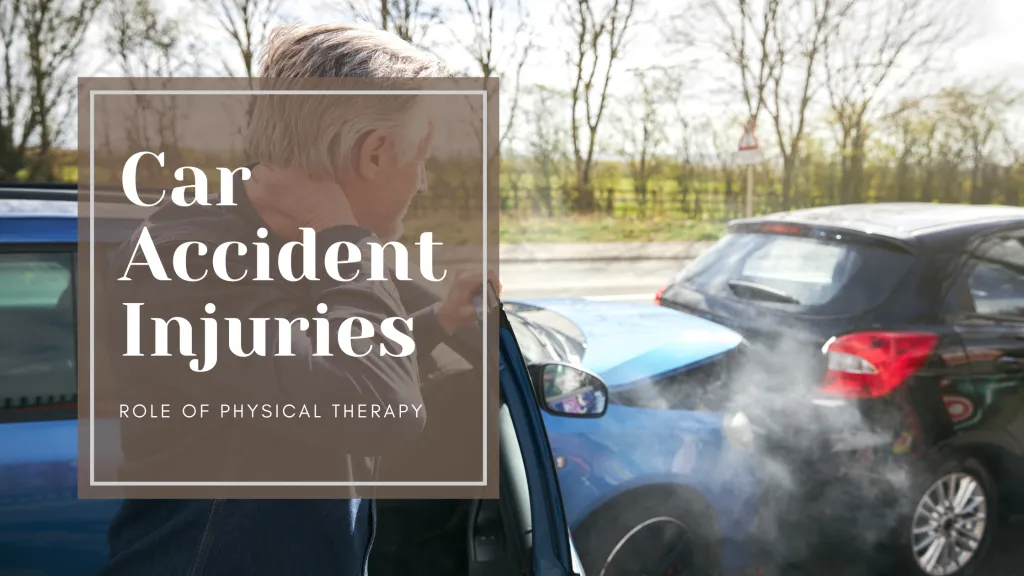Car accidents can happen in an instant but leave long-lasting effects on the body. From minor aches to debilitating injuries, the physical toll often disrupts everyday life and hinders long-term health. Recovery requires more than time; it demands intentional care and rehabilitation.
One of the most effective tools for restoring health after a car accident is physical therapy. By targeting the body’s weaknesses and injuries, physical therapy helps individuals regain mobility, alleviate pain, and prevent chronic issues. This article explores how physical therapy plays a vital role in recovering from car accident injuries and achieving holistic healing.
Understanding Common Car Accident Injuries
According to one legal team, car accidents often result in injuries that vary widely in severity. Whiplash, a common outcome of rear-end collisions, involves strain on the neck and upper back.
Similarly, soft tissue injuries, such as sprains or strains, can restrict movement and cause significant discomfort. More severe accidents may lead to fractures, spinal injuries, or traumatic brain injuries, requiring extensive rehabilitation.
Without timely intervention, these injuries may lead to complications like chronic pain, decreased range of motion, or long-term disabilities.
The lingering effects can impact daily activities, work productivity, and overall quality of life. Recognizing the nature of these injuries is the first step toward an effective recovery plan.
What is Physical Therapy and How Does It Help?
Physical therapy is a branch of rehabilitative medicine that focuses on restoring function and mobility to the body after injury or illness. It encompasses a wide range of treatments, including exercises, manual therapy, and modalities like heat or cold therapy.
Physical therapy not only treats the immediate injury but also aims to strengthen the body and prevent future complications.
The science behind physical therapy lies in its ability to improve circulation, rebuild muscle strength, and reduce inflammation. Through guided exercises and hands-on techniques, physical therapists help patients regain control of their bodies.
By addressing both pain and mobility issues, physical therapy provides a comprehensive approach to healing.
In addition to physical recovery, therapy sessions often educate patients about their injuries and how to manage them effectively. Patients learn proper posture, body mechanics, and preventative techniques to avoid re-injury.
For car accident survivors, these insights are invaluable, enabling them to adopt safer habits and reduce stress in vulnerable areas. Advanced tools like ultrasound or electrical stimulation may also be integrated to enhance recovery.
These innovations not only expedite healing but also empower patients to take an active role in their rehabilitation journey.
Tailored Recovery Plans for Car Accident Victims
No two car accidents are the same, and neither are the injuries they cause. Physical therapists design individualized treatment plans that address the specific needs of each patient. These plans take into account the type of injury, its severity, and the patient’s overall health and goals.
For instance, a patient recovering from whiplash may focus on neck mobility exercises, while someone with a fractured leg might undergo gait training and muscle strengthening. Tailored recovery plans ensure that therapy sessions target the root of the problem, promoting faster and more effective healing.
Benefits of Early Intervention with Physical Therapy
According to top-ranked lawyer, starting physical therapy soon after a car accident can make a significant difference in recovery outcomes. Early intervention helps reduce swelling and inflammation, alleviates acute pain, and prevents the development of scar tissue.
It also promotes healing by increasing blood flow to injured areas and improving muscle flexibility.
Delaying treatment, on the other hand, can lead to complications like stiffness, chronic pain, or secondary injuries caused by compensatory movements.
Engaging in physical therapy early ensures that the body heals correctly, minimizing long-term consequences and enabling a quicker return to normal activities.
Overcoming Psychological Barriers Through Physical Therapy
Recovering from a car accident is not just a physical journey; it is also an emotional one. Many accident survivors experience anxiety, fear, or even depression as they adjust to the aftermath of their injuries. These psychological barriers can delay recovery and impact overall well-being.
Physical therapy addresses these challenges by building confidence through gradual progress. As patients regain strength and mobility, they often feel a renewed sense of control over their bodies.
Additionally, physical therapists provide emotional support, creating a safe and encouraging environment for recovery. This holistic approach helps patients rebuild both their physical and mental health.
An often overlooked aspect of physical therapy is its ability to release endorphins, the body’s natural mood enhancers. Regular movement and progress during therapy sessions can significantly reduce stress and improve overall well-being.
Many patients find that achieving milestones in their physical recovery mirrors a psychological breakthrough, inspiring hope and resilience. When combined with mental health support, physical therapy becomes a cornerstone in helping accident survivors rebuild both their bodies and their lives.
Conclusion: Rebuilding Health with Physical Therapy
Car accidents can be life-altering, but recovery is possible with the right support and care. Physical therapy stands out as an essential part of the healing process, addressing both the immediate and long-term effects of injuries.
By focusing on personalized treatment plans, early intervention, and emotional resilience, physical therapy empowers individuals to reclaim their lives after an accident. Prioritizing this form of rehabilitative care is not just about healing injuries—it’s about fostering a healthier, stronger, and more confident future.

